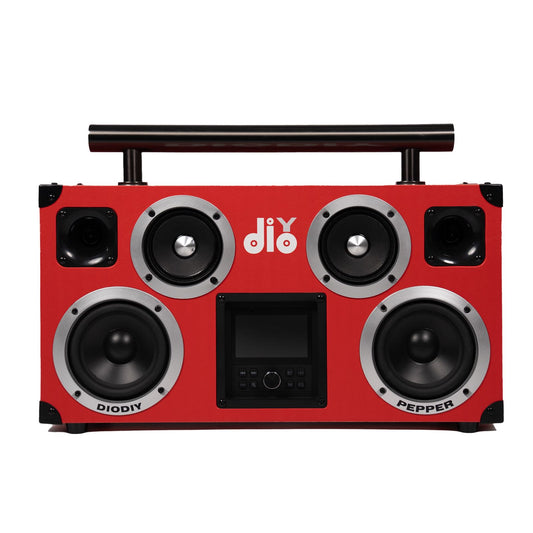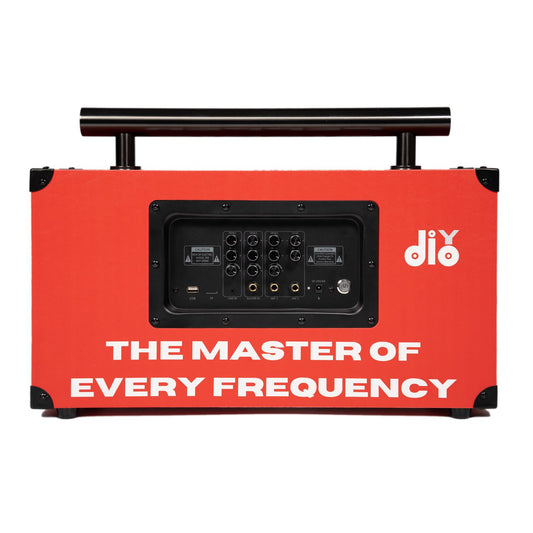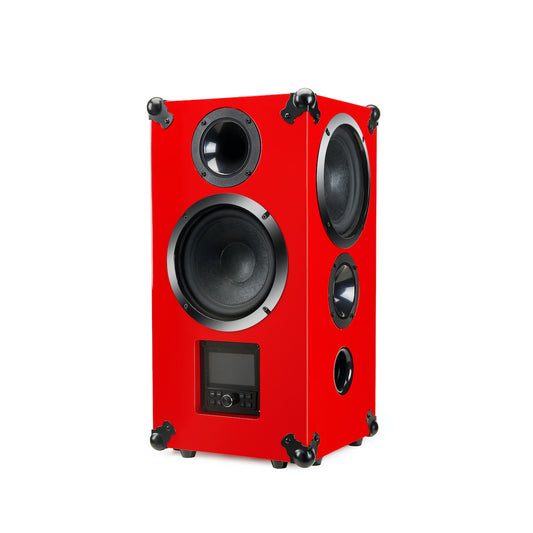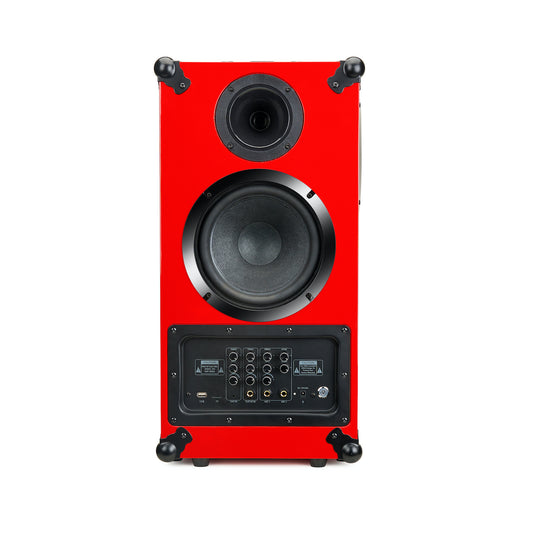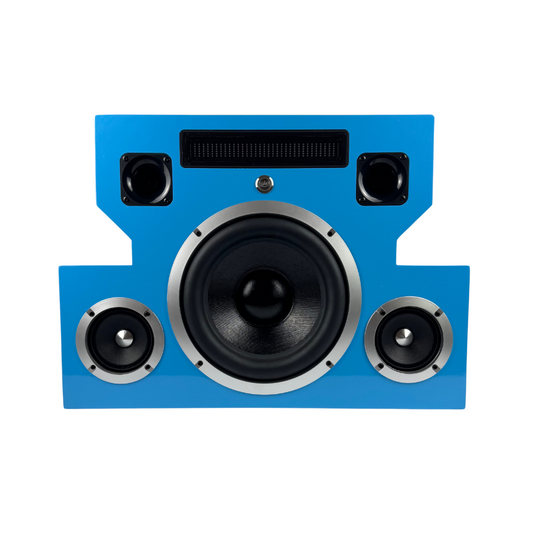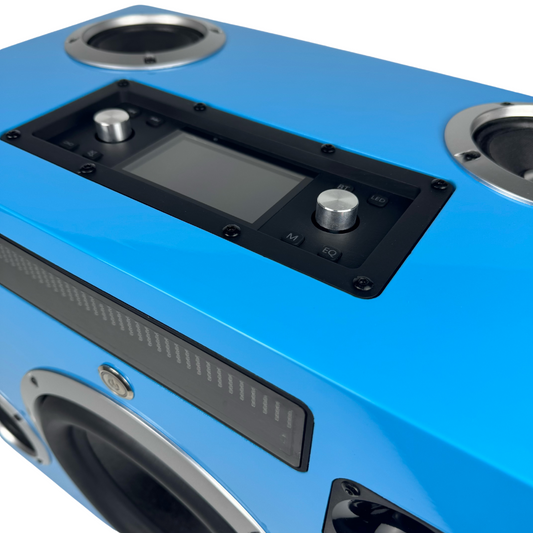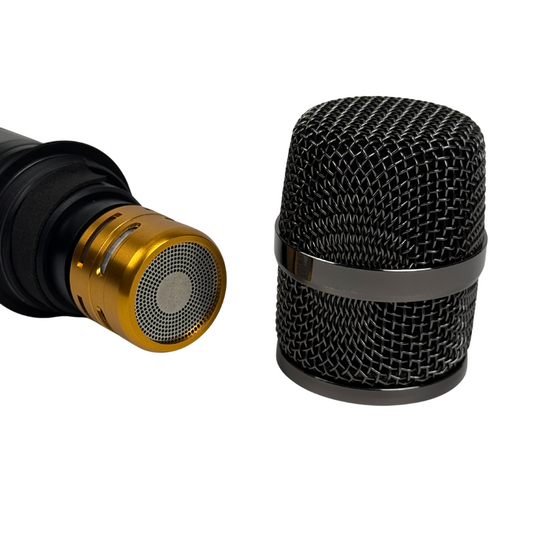
Using a Woofer Alone in Your Speaker Setup: What to Expect
Share
When building a custom speaker setup, it's essential to understand the role of each component and how they contribute to overall sound quality. Can you use a woofer as the only loudspeaker in your speaker system? While technically possible, doing so has significant effects on the sound quality you experience. In this blog, we'll explore what happens when you use a woofer alone, why it may not be ideal, and how this impacts your listening experience.
What Is a Woofer?
A woofer is a type of loudspeaker driver designed to reproduce low-frequency sounds or bass. It plays a crucial role in delivering powerful, deep sounds that add depth to your music. However, a woofer alone cannot reproduce the entire audio spectrum, which includes mid-range and high frequencies. Without these, you miss out on a significant portion of the sound that makes a balanced audio experience.
What Happens When You Use a Woofer as the Only Loudspeaker?
If you use a woofer as the only loudspeaker in your speaker setup, here’s what you can expect:
1. Lack of Treble and High Frequencies
A woofer is not designed to handle high frequencies like vocals or cymbals. As a result, the sound lacks brightness and detail, making the audio dull and muddy. High frequencies are essential for adding clarity and definition to music, and without them, the sound will be incomplete.
2. Overemphasis on Low Frequencies
A woofer focuses solely on low frequencies, which means the sound will be dominated by bass. You'll hear a lot of deep, resonant bass—like a "boomy" or "woofy" sound—but it will lack balance. While heavy bass can be enjoyable for some music genres, the absence of mids and highs makes the sound feel hollow and unbalanced.
3. Poor Overall Sound Quality
Using only a woofer results in poor sound quality because the audio spectrum is incomplete. Music is composed of low, mid, and high frequencies, and each contributes to the overall richness. By using just a woofer, you limit your ability to reproduce the full audio spectrum, which diminishes the overall experience.
4. Lack of Vocal Clarity
Vocals generally fall in the mid to high frequency range. A woofer cannot accurately reproduce the nuances of the human voice, which makes vocals sound muffled and unclear. This is especially problematic for podcasts, audiobooks, or dialogue in movies, where vocal clarity is crucial for understanding and enjoyment.
5. Limited Versatility
A speaker setup with only a woofer is quite limited. It may work if you want a bass-heavy sound for parties, but it won't be suitable for general listening purposes. Whether you're enjoying music, watching a movie, or playing a game, a balanced audio spectrum is essential—and a woofer alone simply can't provide that.
Why You Need Other Drivers in Your Speaker Setup
To create a high-quality speaker setup, you need different drivers that handle specific frequency ranges:
- Tweeters: Handle high frequencies, adding clarity and brightness to the sound.
- Mid-Range Drivers: Handle mid frequencies, including vocals and instruments, providing richness and depth.
- Woofers: Handle low frequencies (bass), providing the foundation and impact of the sound.
By combining these drivers, you can properly reproduce each part of the audio spectrum, resulting in a balanced and immersive listening experience.
Building a Balanced Custom Speaker Setup
If you're planning to build a custom speaker setup, here are some tips to achieve a balanced and high-quality sound:
1. Use a Combination of Drivers
To achieve a well-rounded sound, use a combination of tweeters, mid-range drivers, and woofers. Each driver should handle the frequencies it is designed for, ensuring that your speaker covers everything from deep bass to bright treble.
2. Incorporate a Crossover
A crossover is a crucial component in multi-driver setups. It divides the audio signal into different frequency bands and directs each band to the appropriate driver. This ensures clearer sound and prevents drivers from trying to reproduce frequencies they aren't suited for, reducing distortion.
3. Choose the Right Enclosure
The enclosure plays a significant role in how your speaker sounds. For woofers, a properly designed enclosure helps enhance bass response, while an appropriate design for tweeters and mid-range drivers helps ensure clarity and accuracy in the sound.
4. Test and Fine-Tune
Once you've assembled your speaker setup, test and fine-tune it. Adjust the crossover points, experiment with the placement of the speaker, and make tweaks to achieve a balanced and natural sound.
The Bottom Line: Woofers Alone Are Not Enough
Using a woofer as the only loudspeaker in your setup may provide strong bass, but it lacks the ability to reproduce the full audio spectrum, resulting in an unbalanced and incomplete sound. A proper custom speaker setup should include tweeters, mid-range drivers, woofers, and a crossover to ensure a truly immersive audio experience.
Whether you're new to DIY speaker building or a seasoned audio enthusiast, we offer everything you need to build the perfect setup—from drivers and amplifiers to crossovers and enclosures. Contact us if you have any questions or need guidance on building a high-quality speaker system that meets your needs.

